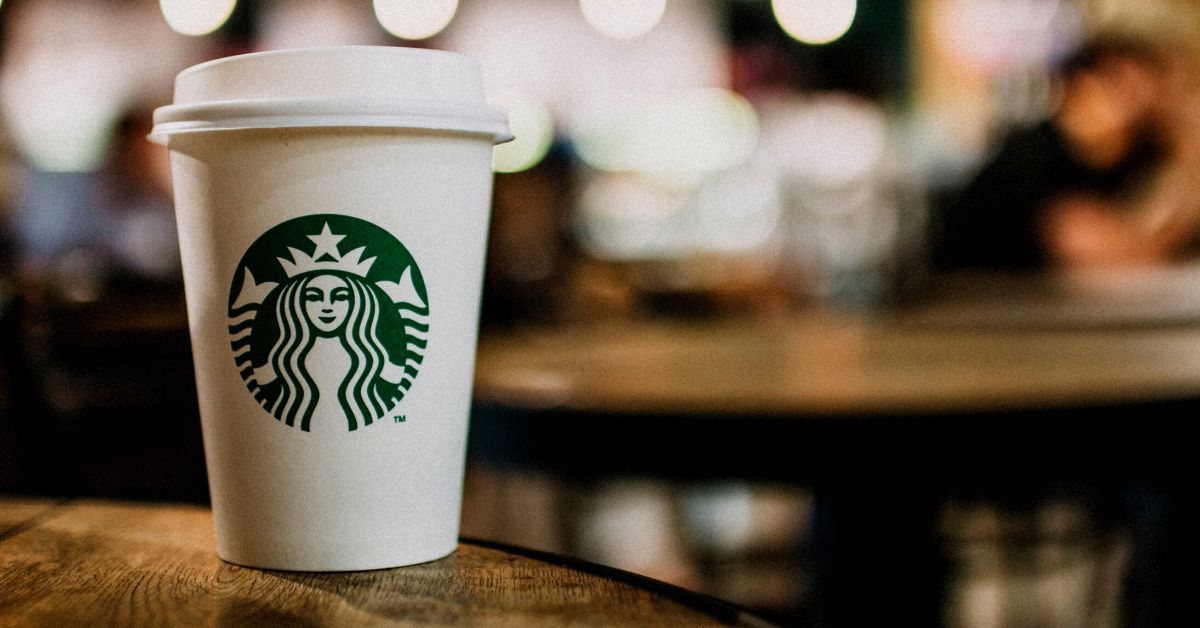Have you ever considered owning a coffee business like Starbucks? Many entrepreneurs have been drawn to this idea due to the popularity and allure of the famous coffee chain. However, there is a pressing question: “Can you franchise Starbucks?“
In this blog, we aim to explore this question and provide clarity. If the answer happens to be no, don’t worry; we’ll also delve into the four best options.
Before we explore the alternatives, let’s discover the Starbucks business. Understanding the history and inner workings of this coffee giant can offer valuable insights into why franchising it may not be a straightforward option.
This knowledge can help you make informed decisions about your coffee business aspirations. So, let’s embark on this caffeinated journey to uncover the secrets of Starbucks’ success and the exciting alternatives that await you in the world of coffee entrepreneurship.
Starbucks Business
Starbucks, founded on March 30, 1971, in Seattle’s Pike Place Market, started as a small coffee shop with a strong commitment to customer service and employee relationships. This evolved into the renowned “Starbucks Experience” we know today.
CEO Howard Schultz, even before international expansion, emphasized the importance of customer interactions. Starbucks instilled core values in employees, offering stock options to create a shared sense of ownership.
Schultz’s decision to maintain company-owned stores due to the need for well-trained staff defined Starbucks’ business model, akin to Chick-fil-A’s.
Today, Starbucks is a publicly traded company, ranked 5th most admired globally by Fortune magazine. In 2022, it ranked 120th in the Fortune 500 with $29 billion in revenue, boasting 383,000 employees across 34,630 units worldwide.
Can you franchise Starbucks?
In North America, particularly in the United States and Canada, Starbucks does not offer franchise opportunities. Instead, individuals and businesses in these regions have the option to license the Starbucks brand.
However, in other parts of the world, Starbucks does offer franchising opportunities, as long as interested parties meet the necessary investment requirements and can cover the associated franchise fees. The availability of franchising with Starbucks varies depending on the location.
How many Starbucks stores?
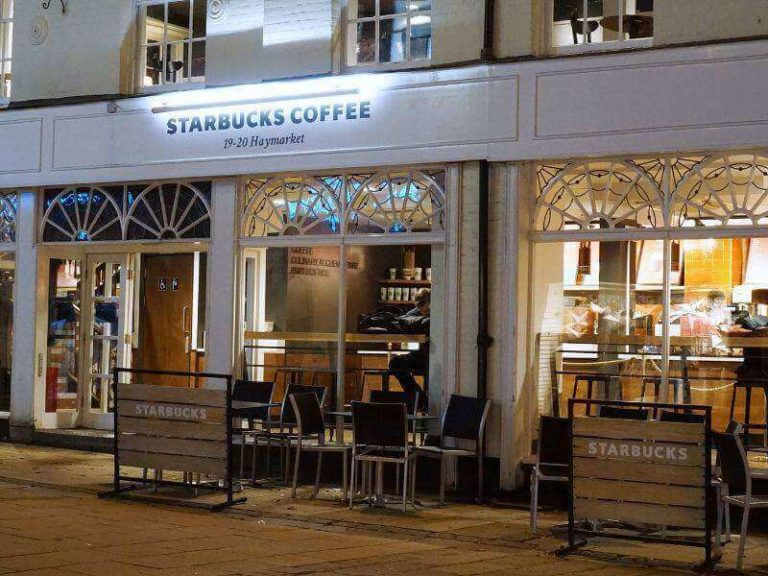
Indeed, the presence of Starbucks in the United States is both extensive and impressive.
As of August 28, 2023, there are a staggering 16,095 Starbucks stores across the country. This remarkable number underscores Starbucks’ status as a ubiquitous and cherished fixture of American coffee culture.
Whether you’re in a bustling city center, a quaint suburban area, or virtually anywhere in between, chances are you won’t be far from a Starbucks store.
Starbucks has successfully woven itself into the fabric of American society, offering a wide array of coffee and tea beverages, delectable snacks, and merchandise to suit the tastes and preferences of a diverse customer base.
Its welcoming and cozy ambiance has made Starbucks not just a place to grab a coffee but also a space for people to socialize, study, work, or simply unwind.
Starbucks Income
Starbucks has proven time again that is it a business strongly resistant to pandemics or any other crisis. The brand has created such a strong customer base and loyalty that having some of the highest coffee prices in the market does not seem to affect consumers.
In April 2022, at the end of the first quarter of the year, they recorded an astonishing $2 billion in Operating Income for North America, while their international franchise model cashed in a modest $480 million in the same month.
This is a smaller amount than the previous year but nevertheless, the net outcome is not only positive but the company’s net worth is $82.428 B, second only to the McDonald’s business, which is worth $173.335 B.
The Future of the Starbucks Brand
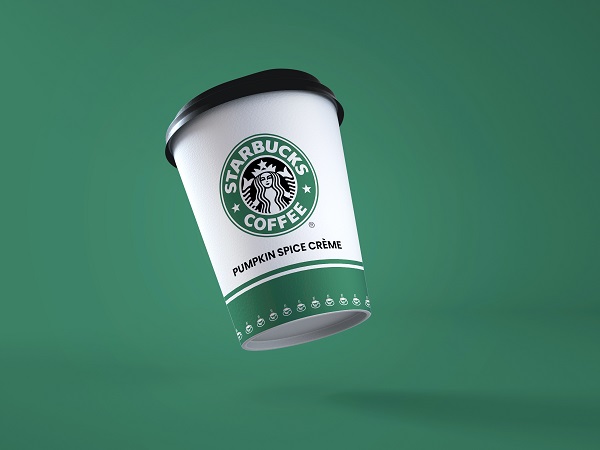
How far can Starbucks go in its climb to success?
Starbucks continues to diversify and innovate, extending its offerings and reach. From coffee and tea to apparel and a revamped app, the company is also venturing into delivery and B2B services. There’s no sign of profits declining anytime soon.
As the pandemic wanes and lockdowns ease, Starbucks expects more in-store customers but possibly lower per-order values. To counter this, they’re introducing drive-thru options, speeding up service and reducing costs to maintain revenue growth.
Can Starbucks change its core strategy?
Starbucks traditionally sticks to a company-owned model, limiting franchise opportunities in the US and Canada. If you’re considering a Starbucks venture, remember this rigidity. However, there are still numerous ways to succeed in the coffee business or explore alternative franchise options.
If owning a Starbucks franchise isn’t an option, there are other avenues to explore in the coffee industry.
Can't Franchise Starbucks, So What Can You Do?
1. Open a Licensed Starbucks Coffee Store
As we have discussed, your first option is to open a Starbucks-licensed first store. This is the worst option as it comes with fantastic advantages and support from the Starbucks company. After all, their reputation and business are also at stake.
What Is the Cost of Opening a Starbucks Licensed Store?
Apart from needing to have a sizeable amount of liquid assets, you will have to account for the licensed fee, which is close to $315,000. Given that this is a business comparable to McDonald’s, you can imagine that the licensing fee needed to start will be close to $1 million in liquid assets.
Of course, on top of the license fee, you will have to find the store location, which will most definitely be expensive, given that all Starbucks locations must be in high-traffic areas such as retail, healthcare, universities, military facility healthcare hotel, and airports.
The price of decorating and setting up the store will depend on how you decide to bring out the Starbucks values in your coffee store.
What are the Advantages and Disadvantages of the Starbucks Brand License
The Advantages
Even though it may seem like you are taking a big hit “renting” the Starbucks name but not owning the business, as you would with a franchise, it is still a great opportunity to join the industry and run a profitable store.
By joining the group of licensed shops, you will be receiving an immense amount of support and guidance in making sure the coffee shop is as successful as possible.
Firstly, you will have the advantage of offering buyers the Starbucks menu, fully loaded with Starbucks-trademarked baked goods and food items, continuously improved and upgraded. Also, you will receive Starbucks menu equipment training.
The Biggest Benefit: Customized Store Design
What’s even more exciting is the support of having your very own customized store design. Since it is a licensed store and not a company-owned coffee shop, as long as you have a good location, they are not concerned whether your choice of space is a high-ceiling arcade, a hole-in-the-wall, or a food truck.
They will bring in their experts and provide you with the best store design for your Starbucks coffee shop.
Check out this incredible Starbucks food truck!
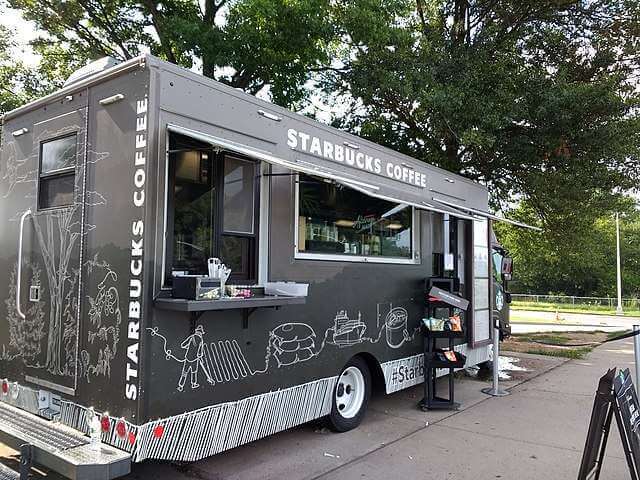
The Disadvantages
Apart from the strict financial criteria needed to even be approved to open a licensed Starbucks store, there are a few other challenges that come with the Starbucks business.
Starbucks sells High-End, Premium Coffee
This might not seem like a challenge at first but, depending on your demographics, you might want to first double-check that your buyers will be able to even afford it in the first place. It often can seem like a great business opportunity but it falls flat once opened, due to the perception that it is too expensive or because your local customers simply cannot afford it.
Starbucks Store Locations
There is no way you can get approved for a Starbucks license without a really good store location. But, as you can guess, a great location also comes with a very expensive rent, which can be prohibitive for those opening a Starbucks store.
2. Open a Starbucks Franchise, Abroad
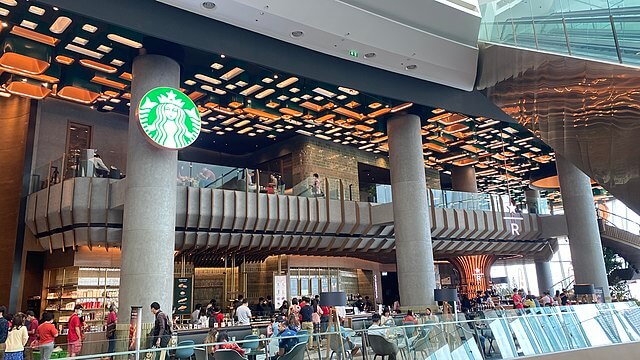
If you already had plans of moving abroad, then the franchise option is perfect for you! At the same time, if you are confident that you want to open Starbucks under your ownership and you are still in the US or Canada, then your only option is to start thinking of opening this business abroad.
Although this might seem like a difficult or farfetched option, Starbucks has been steadily growing its international presence, with Starbucks franchise stores opening up at an incredible rate. Especially with the rise of economies such as China, India, Thailand, Indonesia, and so on, local franchise owners have been elevating the Starbucks brand even further, offering not only a premium product but also a premium experience to their customers.
Requirements for Opening an International Starbucks Franchise
Given the reputation and growth of the company, Starbucks naturally has some strict criteria for selecting its franchise owner. Some of the key requirements to open a Starbucks franchise are:
- Previous experience in the Food & Beverage industry
- Experience managing a multi-site business
-
Commitment to open at least 20 stores within 5 years
- Obtain and finance the equivalent of $500,000 in liquid assets
So before you decide to jump on a plane to Europe or Asia, make sure you are ready to commit to the Starbucks business and culture and that you are in it for the long term.
3. Open an Actual Coffee Franchise, in the USA
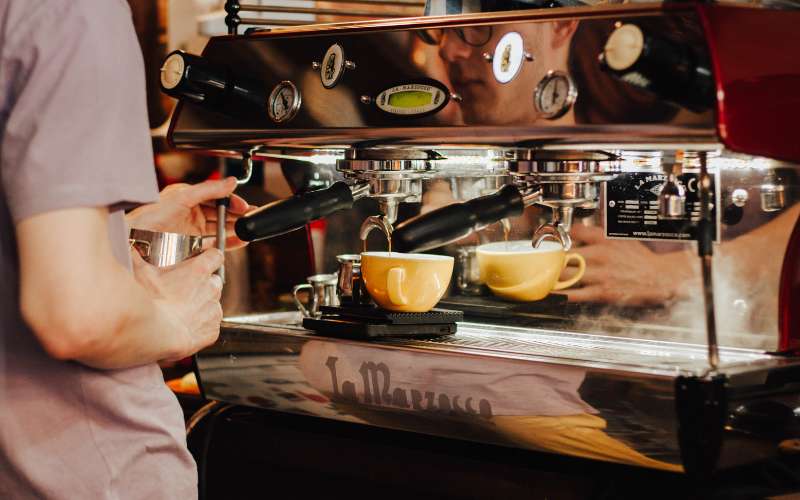
So you don’t want to open licensed shops and you don’t want to move to Europe or Asia to open a Starbucks franchise, but you still want to start your own coffee shop franchise. Well, you are in great luck because there are a lot of other franchises that sell coffee.
Some of the coffee brands that offer more franchises include the less premium but equally as competitive, Dunkin’ Donuts, Biggby Coffee, and the Dunn Brothers Coffee franchise.
In fact, Dunkin’ Donuts has secured a fantastic spot as the best alternative to the Starbucks franchise with a notable net worth of approximately $10 billion. Unlike Starbucks, Dunkin’ Donuts does not just operate a franchise model but encourage its expansion within and outside the USA with more than 3,000 stores internationally.
How much does a Coffee Franchise Cost?
As with any franchise, there are certain amounts incurred, as well as financial requirements that you will need to meet in order to start your own coffee business. Here we summarize the three examples provided earlier (Dunkin’ Donuts, Biggby Coffee, and Dunn Brothers Coffee):
Dunkin’ Donuts Franchise Costs
Locations: 8,500+
Royalty Fees: 5,9%
It goes without saying that the Dunkin’ Donuts name is the biggest advantage you have from starting a joint venture with them. As a well-seasoned franchise company, Dunkin’ Donuts offers their franchisees a 6-week intensive training course in everything they need to succeed.
From the Dunkin’ Donuts brand, to store and business management and even training and support on the production and manufacturing of the products.
Biggby Coffee Franchise Costs
Locations: 300+
Royalty Fees: 6%
By covering the franchise fee and necessary investment to establish a Biggby coffee store, they provide you with a ton of support.
From choosing the best location to guidance on the best architectural plans a full 2-day training course and continued supply chain, marketing, and business operations support throughout your franchise time with them.
Dunn Brothers Coffee Franchise Costs
Locations: 57+
Royalty Fees: 5%
The Dunn Brothers team is made up entirely of franchisees, and as such, they understand what is needed for the success of a new franchise or any other business for that matter.
They provide incredible support for the new members of their company by offering support from an existing business manager who guides them through improving their management, customer service, and merchandising skills.
4. Open Your Own Independent Coffee Shop
With the current demographics shifting from office-based work to co-working and freelancers working in coffee shops, the business opportunities, like opening a first store are endless. Of course, you might not have the Starbucks reach or the iconic baked goods in the grocery stores, but you can create an atmosphere and brand all of your own.
It is a food and beverage industry with increasing demand, even when people cannot go for onsite visits, they still want their favorite coffee. So if you are a passionate barista or entrepreneur that believes in good quality coffee, food, and vibe, you can consider yourself one step closer to opening a Starbucks competitor for your neighborhood.
Cost of Starting Your Own Coffee Shop
This one is impossible to estimate as it is entirely up to you! Things to consider when building up your budget though, include:

Legal Fees
Legal fees for lawyers depend on whether you are starting your business alone or if you will have partners, investors, and so on. The more complex your starting model the more you might find yourself spending setting up the legal entity.
Location
Both geographical location, as well as the size of your store, will dictate your rent or cost to buy.
Decoration
It is a no-brainer that if you want to go simple, with minimal decor it will be far less expensive than if you decide to load the shop with antiques and collectibles. A note of caution when considering the decoration of your store, the more unique you make it the more it becomes “niche”. So if you are after high customer turnover, you might want to cater to the many and not the few.
Running Costs
This is one that trips most entrepreneurs. When adding up the running costs, consider your supplies (plus any unsold material as waste), employees and their benefits, utilities as well as equipment maintenance. If you are renting, this will be also an unavoidable running cost.
Advertising
Do not underestimate the amount or effort required for good marketing and advertising. Figuring out the best way to reach your customers may require trial and error and a lot of learning while continuously spending money. It is nevertheless an essential part of your running costs if you plan to maintain and expand your business to reach more customers.
Final Thoughts
Although opening a franchise Starbucks store could be the ideal new business opportunity, opening a licensed store can be just as exciting, promising, and at the same time challenging. Even for a big brand like Starbucks.
However, for those looking for a more established, franchise model, there are plenty of other franchises available that offer great support and guidance to new franchisees.
And for those still unsure of the commitment to another business altogether, there is the option to open their own independent cafe.
But before you make any decision, locally or abroad, make sure to take advice from an expert in the franchise business who can help you in making what could be the best decision for your career.

